During the late summer and early fall of 1942, two relatively obscure Allied commando raids led an enraged Hitler to issue an order that directly violated the rights of the wounded and prisoners of war under the “1929 Geneva Convention for Prisoners of War.” The aftermath of the order resulted in the executions of hundreds of Allied soldiers, the post-war executions of the German officers who carried out Hitler’s orders, and cited as evidence for war crimes in the trial of the Nazi leadership at Nuremberg.
Two Minor Raids
Shortly after the August 1942 raid on Dieppe, France, a copy of Allied operating orders fell into Hitler’s possession. The orders called for the binding of prisoners. When Hitler was told that German prisoners were found shot with their hands tied he went into a rage. Two months later, British commandos were dropped onto the German occupied island of Sark for the purpose of reconnaissance and to capture some soldiers for interrogation. Unfortunately, four of the five German prisoners the commandos captured were killed before being sent to London. The official German account was that the soldiers’ hands were tied when shot. This put Hitler over the top and several days later, he ordered Allied prisoners to be shackled.
Three days after the raid on Sark, Hitler issued the following communique to the Wehrmacht:
“In future, all terror and sabotage troops of the British and their accomplices, who do not act like soldiers but rather like bandits, will be treated as such by the German troops and will be ruthlessly eliminated in battle, wherever they appear.”
Kommandobefehl or the Commando Order
On October 18, 1942, Hitler issued the Kommandobefehl or Commando Order. The order was to execute any Allied commando prisoner caught in the act of a raid, sabotage, or acting as a foreign agent even if they were in military uniform. This was in direct violation of the Geneva Convention and the Nazis knew it. Only twelve copies of the order were produced and distributed. The order was issued with the following instructions: “Intended for commanders only and must not under any circumstances fall into enemy hands.” As the order trickled down to Wehrmact line units, many officers were shocked. They knew it to be illegal and a violation of the Geneva Convention. Those who disobeyed the order were court martialed or relieved of their post (every German soldier knew that one of their “Ten Commandments” stated that no soldier should obey an illegal order). Some generals, such as Rommel, never relayed the order to their subordinates. However, a majority of officers carried out the order.
One general who personally signed the execution order of fifteen commandos was Anton Dostler (1891−1945). The U.S. commandos landed behind enemy lines on the northern coast of Italy in March 1944. The two officers and their men were dressed in army uniforms and carrying enough explosives to carry out their mission to sabotage a railway tunnel. Two days later, they were captured and brought before General Dostler. Under interrogation, one of the men cracked and revealed the commando mission.
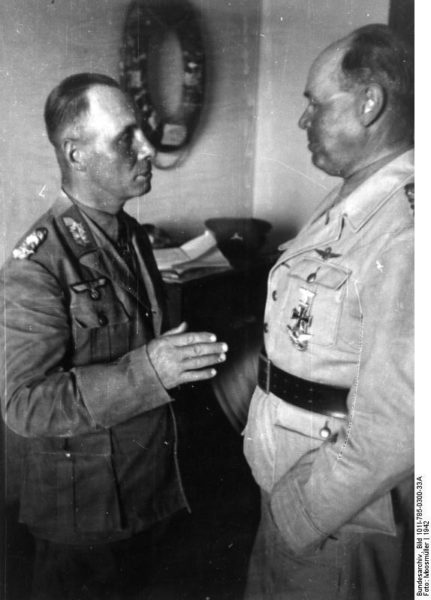
Dostler relayed this information to his superior, Field Marshal Albert Kesselring (1885−1960), and requested instructions. Kesselring ordered the men executed under the Commando Order. Massacres under Kesselring’s command such as this earned him the death sentence at his war crimes trial (his sentence was subsequently commuted to life). Dostler ordered one of his staff, Alexander zu Dohna-Schlobitten, to sign the execution order. Dohna-Schlobitten refused to sign the document as he knew it would violate the Geneva Convention. Dostler dismissed him for insubordination and signed the order himself thereby guarantying his own death sentence after the war.
Operation Jedburgh
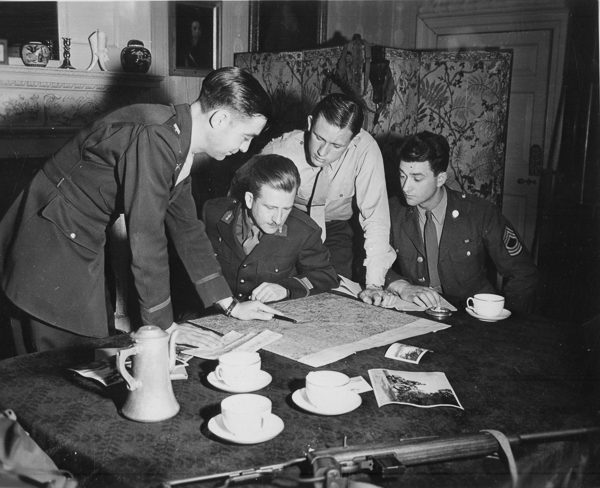
Over the years, the subject of some of my blogs has been the British led operation named Special Operations Executive (SOE) and its agents. It was one of many Allied intelligence agencies operating in the occupied countries. Leaders of each agency looked at the others as competition and as such, there was very little cooperation. That is, until it became clear that Nazi Germany was going to lose the war.
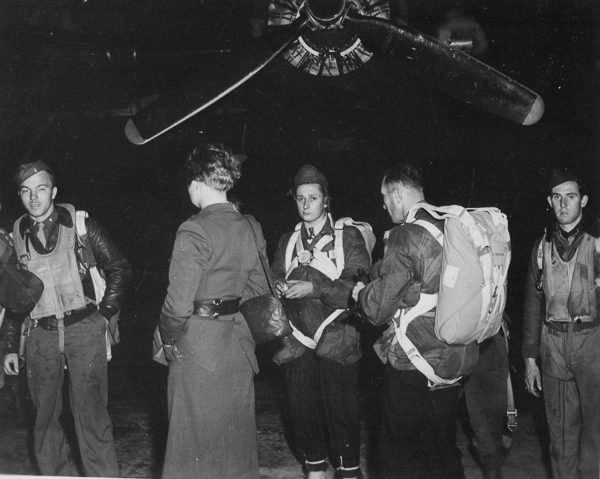
Prior to D-Day (6 June 1944), agents of the SOE were instrumental in aiding the French Maquis for the preparation of the invasion. As part of the planning for D-Day, the Allies formed a clandestine organization called Operation Jedburgh. It was a combined operation consisting of the SOE, the U.S. Office of Strategic Services (OSS—the forerunner to the CIA), The Free French Central de Renseignements et d’Action (BCRA), and the armies of Holland and Belgium.
There was a total of one hundred Jedburgh teams consisting of three members each: two officers (commander and executive officer) and a non-commissioned radio operator (a similar team structure as the SOE used for their network cells). Each team was issued a codename—typically first names such as “Hugh.” Their mission was to inspire outright resistance activities and provide aid such as guns, ammunition, and cash. As such, the “Jeds” wore military uniforms rather than civilian clothes. This meant that upon capture they would be executed under the Commando Order. Only one “Jed” out of three hundred met this fate.
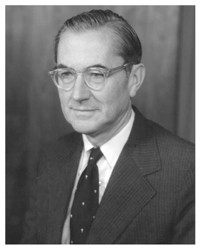
Several of the surviving “Jeds” included OSS officers, William Colby (1920−1996)—former director of the CIA, and General John Singlaub (b. 1921)—one of the founding members of the CIA and highly decorated major-general (retired).
Associated Press Correspondent Joe Morton
The only war correspondent executed by the Axis during the war was Joseph Morton. He was a member of a commando group taking part in the “Houseboat” mission. Captured by the Germans, the men were transferred to the Mauthausen Concentration Camp where they were executed under the direct orders of Ernst Kaltenbrunner (head of the Gestapo and SS).
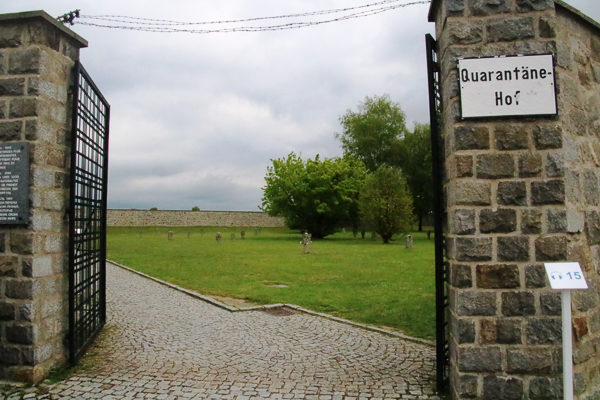
The Aftermath
After the war ended, the Nuremberg trial began. You are likely familiar with the trial of the twenty-four Nazi leaders and the four counts brought against them including the last two: war crimes and crimes against humanity. The Commando Order was specifically cited by the prosecution as evidence of guilt under Count Three (War Crimes). General Alfred Jodl signed the original Commando Order and was responsible for its distribution and implementation (he was found guilty of all four counts—death by hanging). Additionally, Wilhelm Keitel (death by hanging) (click here to read the blog Night and Fog), Erich Raeder (life imprisonment), and Ernst Kaltenbrunner (death by hanging) were found guilty of war crimes based in part on their actions concerning the Commando Order.
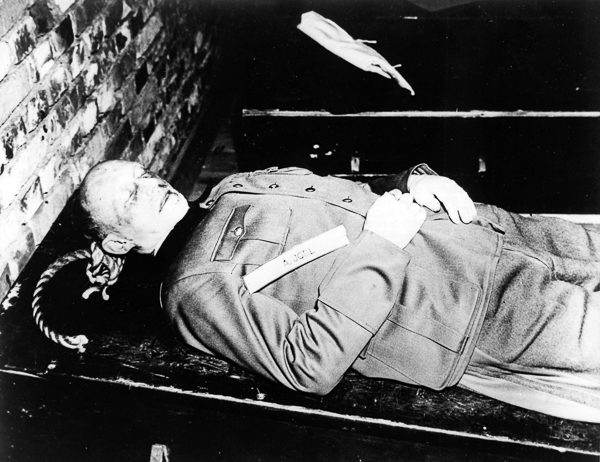
In the months and years to follow, lower ranking Nazis were brought to justice for their war crimes and crimes against humanity. The Commando Order was one of many decrees used as evidence resulting in the conviction and subsequent death sentences of many Nazi officers (like Anton Dostler) who had signed the execution orders of Allied commandos.
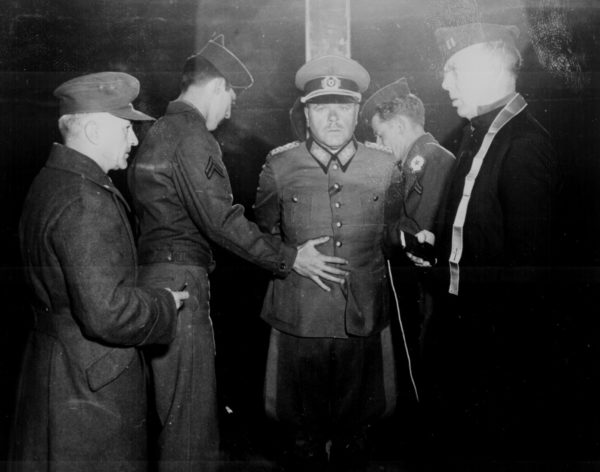
Blogs on SOE
The White Mouse- The Story of Nancy Wake Women Agents of the SOE
Recommended Reading
Tusa, Ann and John Tusa. The Nuremberg Trial. New York: Skyhorse Publishing, 2010.
Dodd, Christopher J. with Lary Bloom. Letters from Nuremberg. New York: Three Rivers Press, 2007. Senator Christopher Dodd’s father, Thomas J. Dodd, was one of the American prosecutors at the Nuremberg trial. This book is a compilation of letters the senior Dodd sent home to his wife during the trial.
What’s New With Sandy and Stew?
We’re river cruising through Europe right now. Today, we’re in Germany after visiting Nuremberg. We opted for the World War II excursion in Nuremberg as opposed to the visit to the toy store. That decision was a no brainer. We passed by the castle where King Richard the Lionheart was held prisoner for a year after abandoning his trip to the Crusades. It’s always fun to visit sites that make it into my books as part of the stories I tell.
Someone Is Commenting On Our Blogs
If there is a topic you’d like to see a blog written about, please don’t hesitate to contact me. I love hearing from you so keep those comments coming.
Why Would You Want To Buy Our “Walks Through History” Books?
Simple.
You like to travel and experience history and historical events. You like to see original buildings that had a significant impact on the people and events of the history you’re engaged with. You want to know the stories behind the brick and mortar in front of you. The walking tour books are meticulously researched so you can go directly to those sites and learn about the building’s history as well as an introduction to some of the more interesting people associated with it.
Thank You
Sandy and I appreciate you visiting with us. We have some exciting things on the horizon and we’ll keep you updated as we go along.
Share This:
Follow Stew:
Find Stew’s books on Amazon and iBooks.
Please note that we do not and will not take compensation from individuals or companies mentioned or promoted in the blogs.
Walks Through History
Copyright © 2017 Stew Ross


In Germany commandos were seen as “dirty fighters” who did not fight fairly (as in open combat). But many saw this befehl as illegal and still carried it out. Even SS units sometimes just handed them over to other organisations to be dealt with.
Thanks Mark for commenting on the commandos. I appreciate you reaching out to us. Let us know if there is a topic or subject you’d like to see as a blog. Also, thank you for subscribing to our bi-weekly blogs. Best – STEW